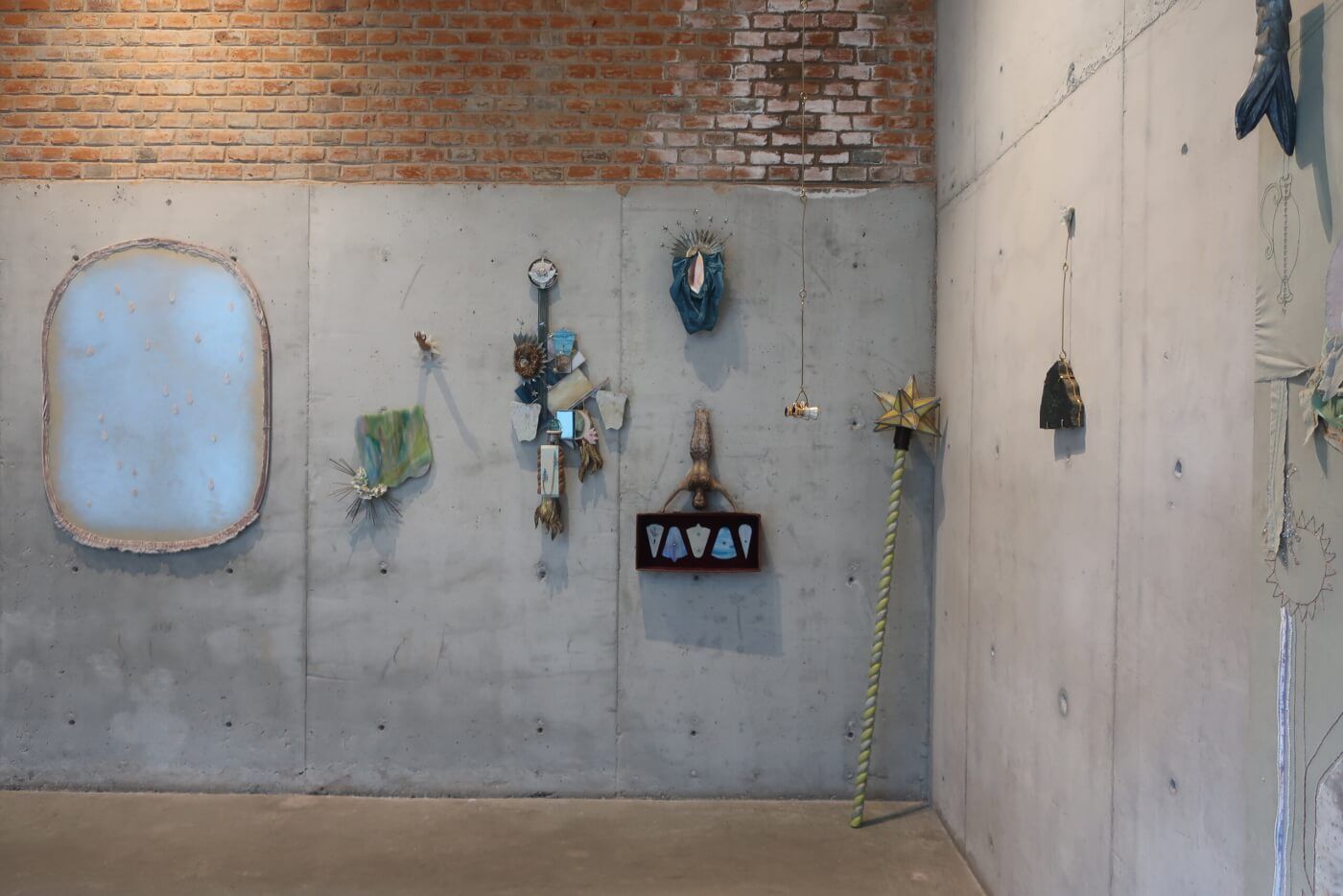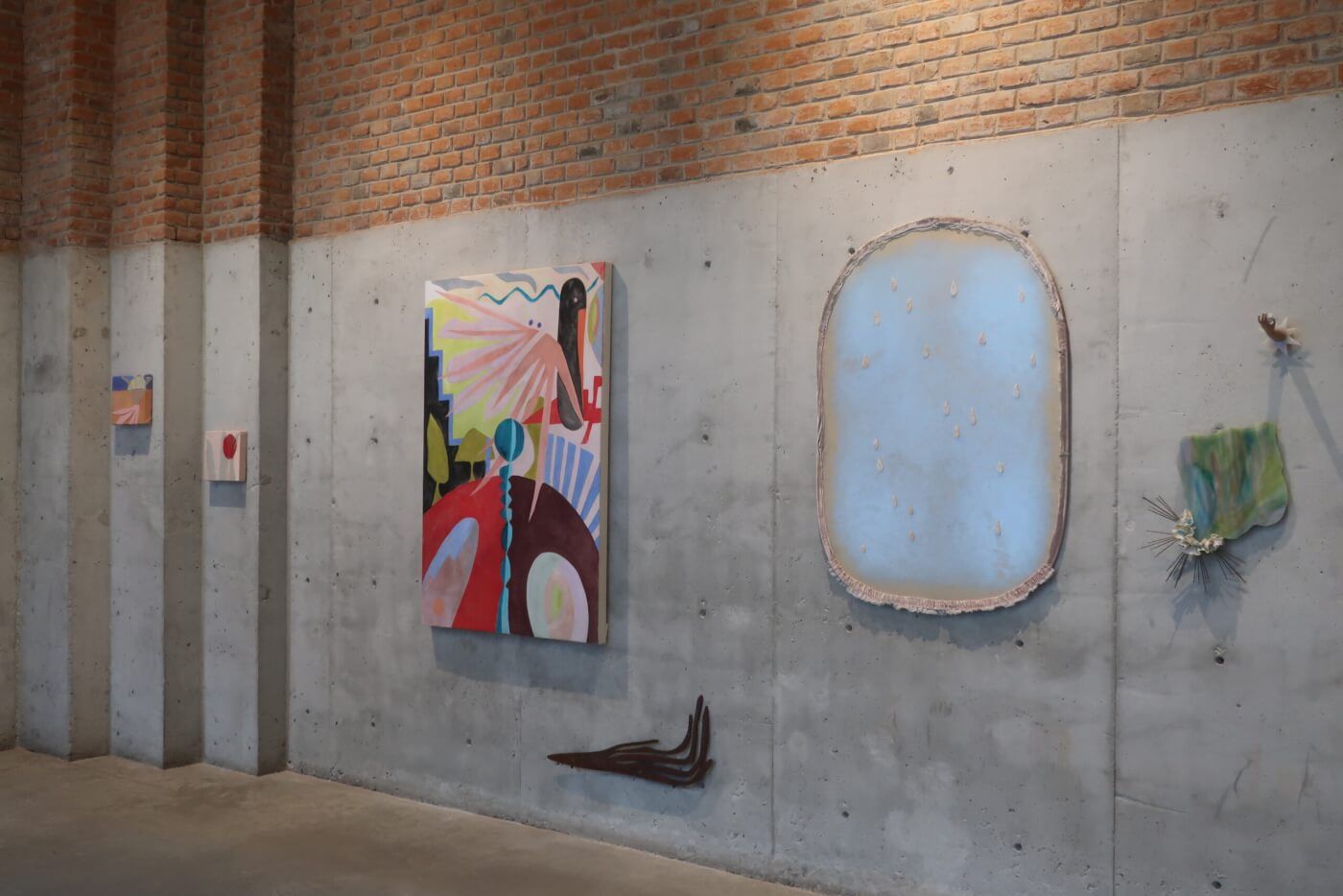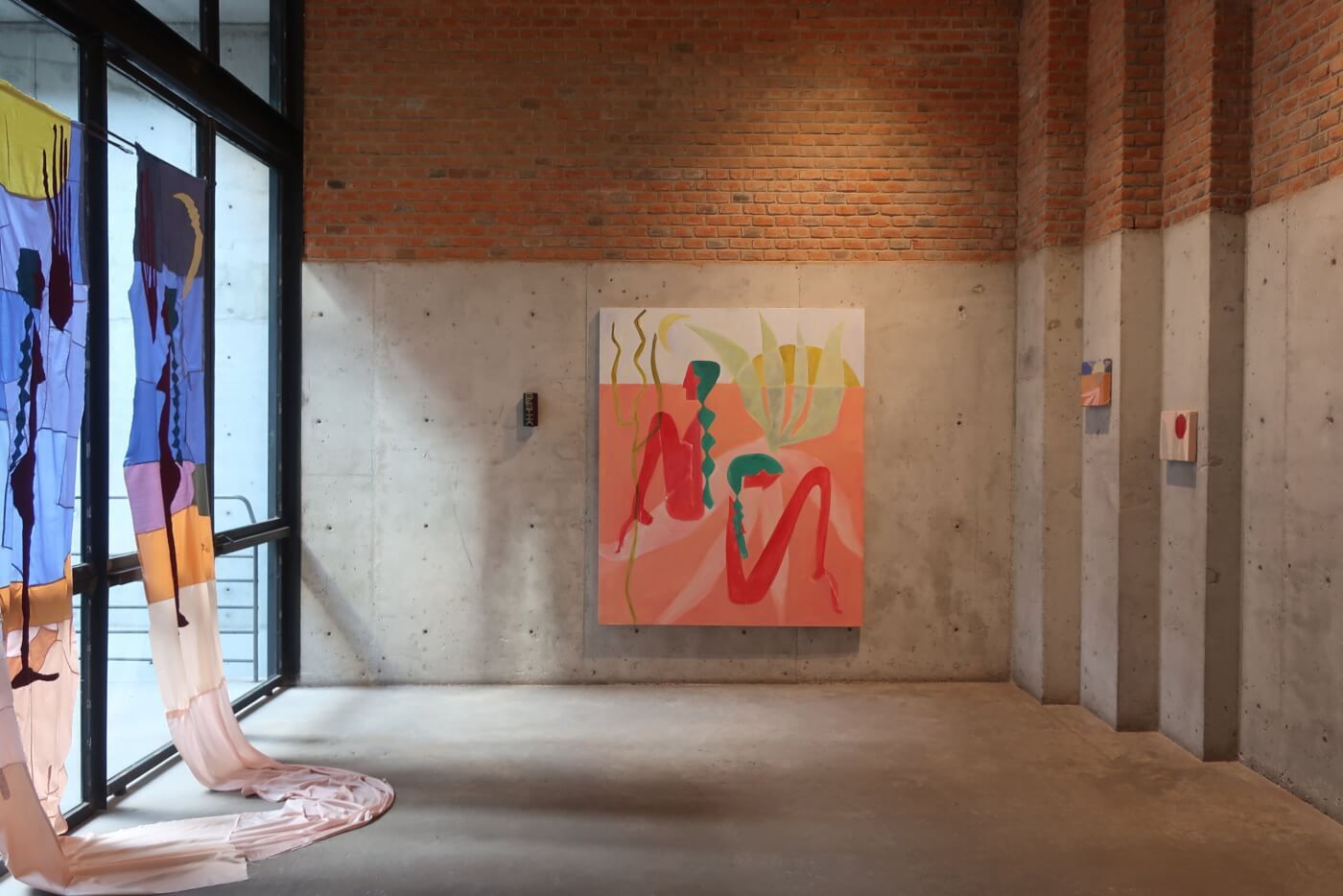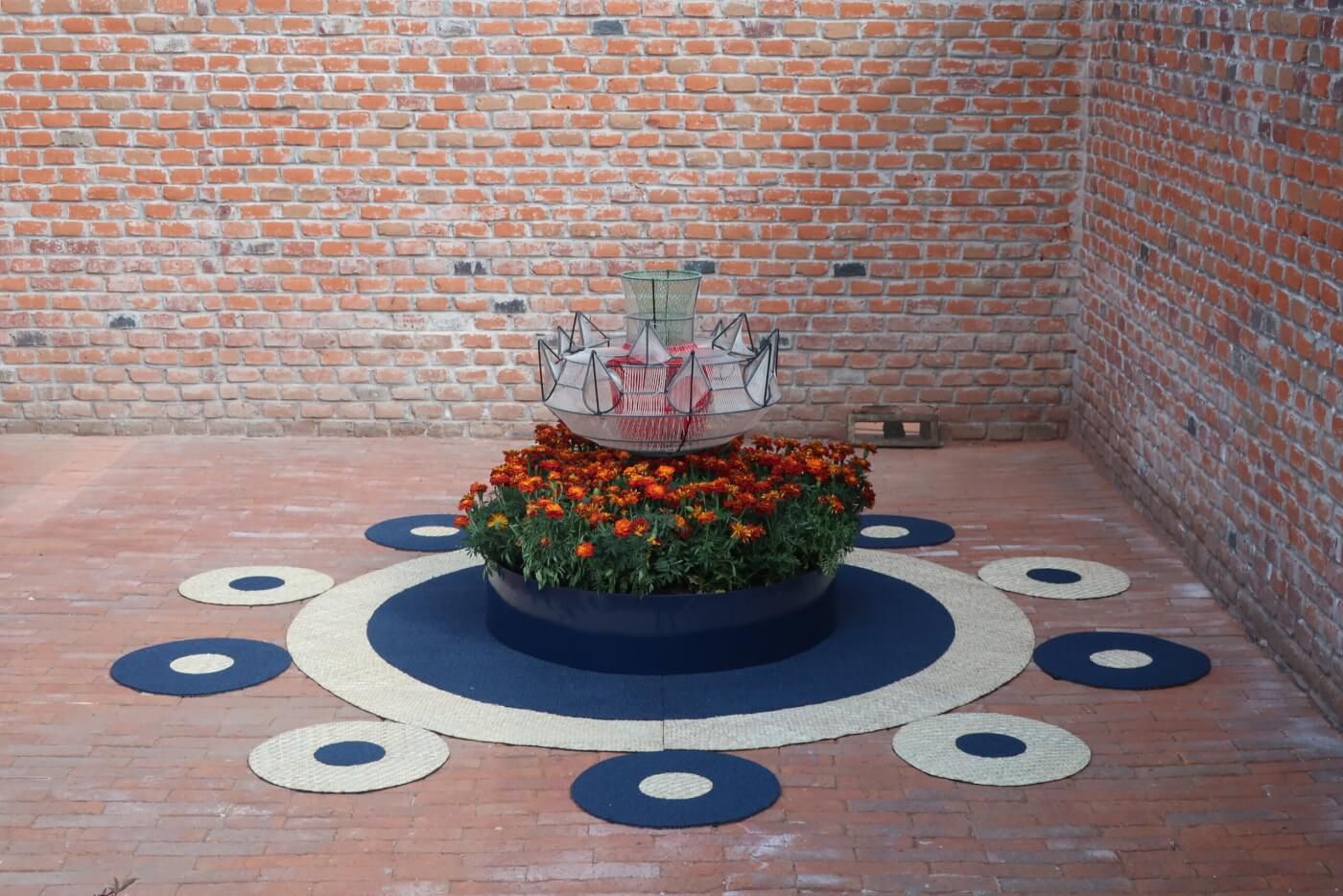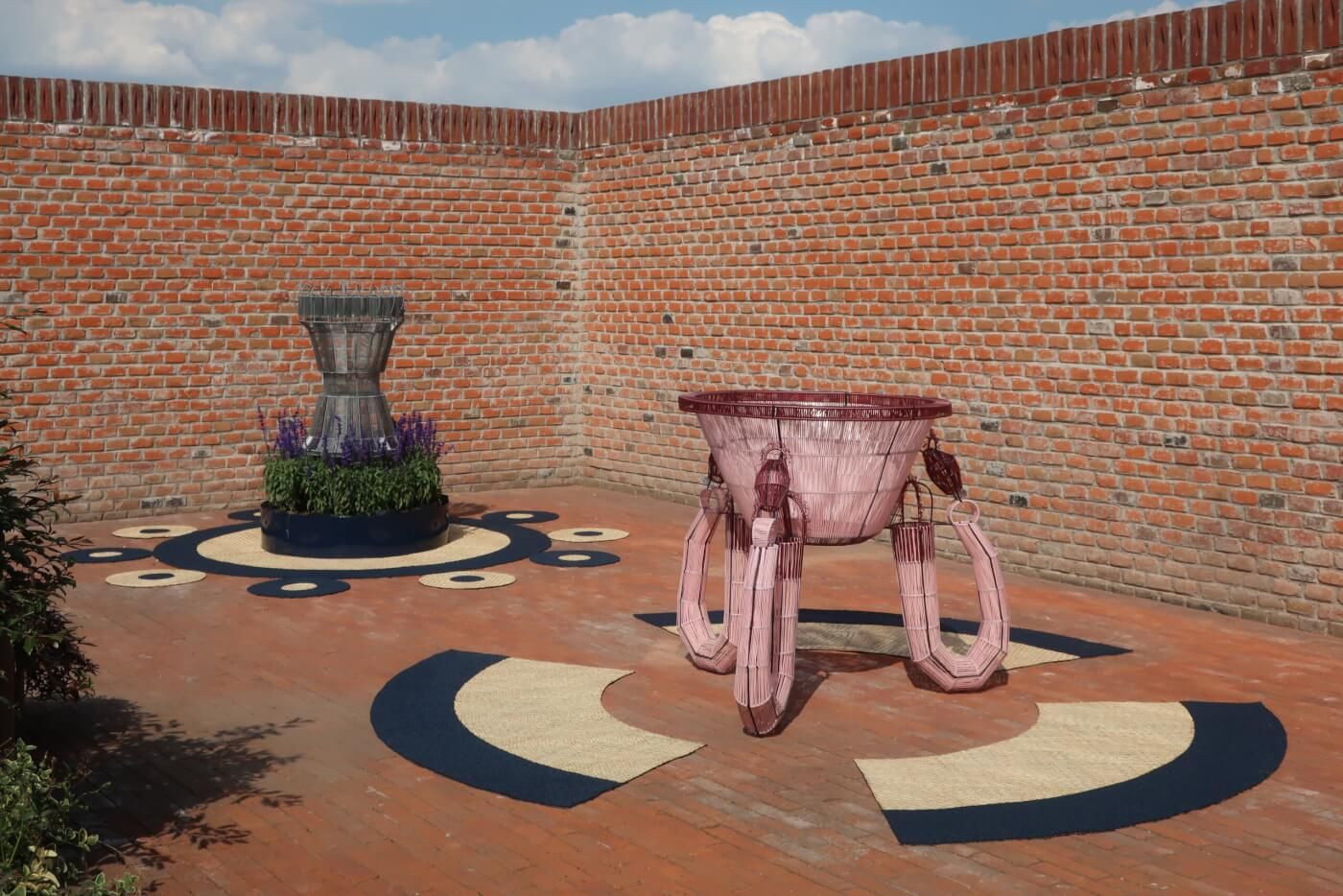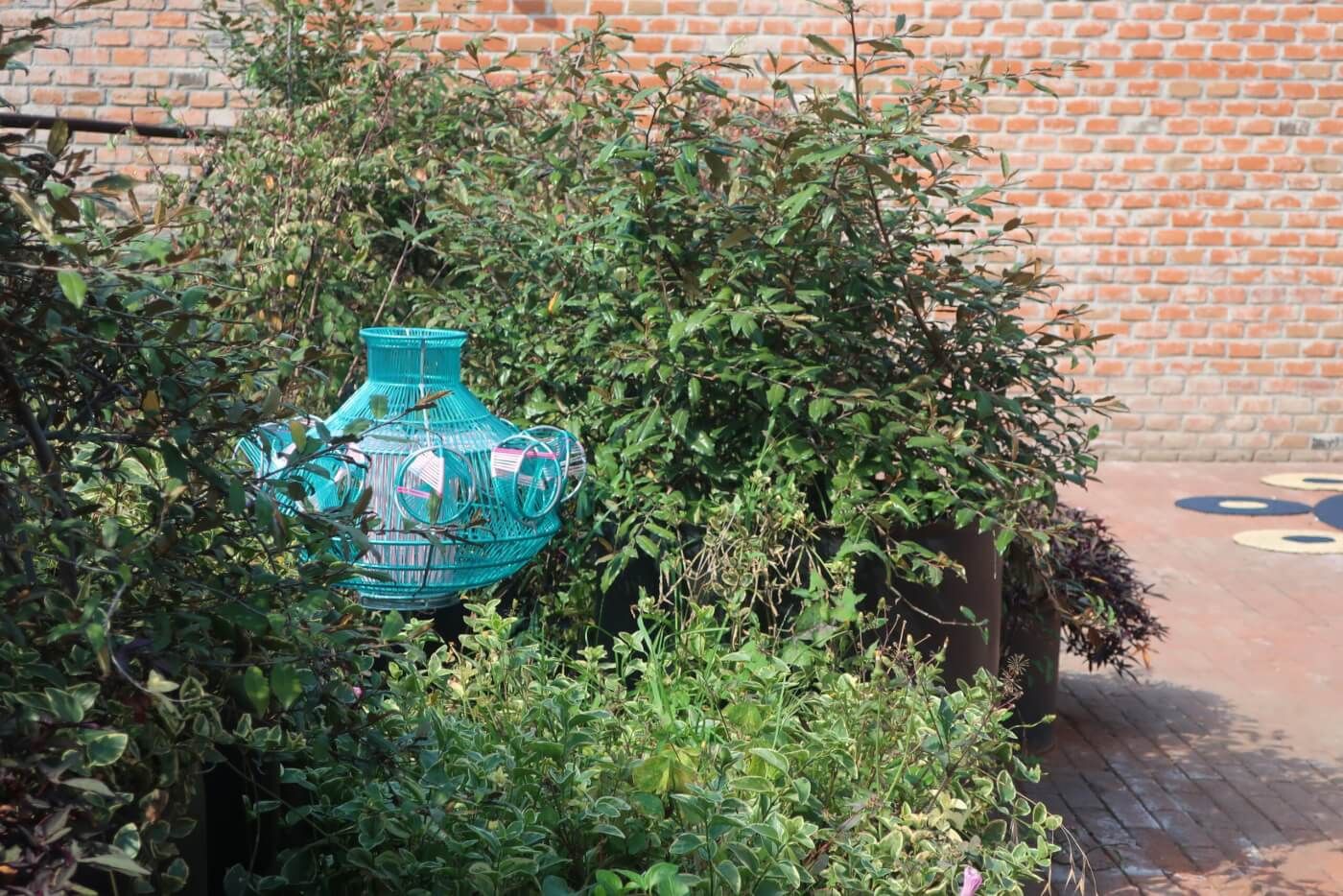Americanas
Aurora Noreña | Lisa Saldivar | Clara De Tezanos
October 19, 2024 – January 12, 2025
Parcelas Floridas | Aurora Noreña
Terraza
Banderas para La Nueva Mestiza | Lisa Saldivar
Verdades Intrínsecas y Teorías Empíricas | Clara De Tezanos
Galería
The Whitney Museum of American Art reopened in its new home in 2015 with an installation of the permanent collection entitled America Is Hard to See. Comprising more than six hundred objects, it set about unpacking prejudice, exploding common assumptions about identity, and generally challenging the limited canon of Americanness the museum had been created to champion. The abandonment of a rigidly political definition of citizenship in favor of the boundless horizons of self-definition and self-identification was exhilarating. America suddenly seemed to come into focus by becoming more difficult to define.
I started coming to Mexico that same year working on behalf of the multi-hyphenate Japanese American sculptor Isamu Noguchi. On an early visit, I referred to a colleague in the United States as “American,” to which a Mexican colleague replied, “Yeah; me too.” Never having thought of myself as a resident of the Americas—or provincial, or chauvinistic—it was one of those moments when you realize that you have been operating in a closet with your eyes closed while thinking you were sailing around the world. United States American solipsism is the 800-pound gorilla of our region. But it is México (and Brazil), with large, parallel, and intertwining Indigenous, colonial, and other non-Indigenous populations and cultures that are arguably more American—if Americanness is a dream of the goods that can emerge from an ever more compound future.
Taking inspiration from the work of Aurora Noreña (Ciudad de México, México, 1962), we began with the premise that México is, or is becoming, or will be, or could be, or should be, the center of cultural gravity in the Americas. Noreña is in the middle of a project to “repatriate” pre-Hispanic vessels held in a private collection by crafting big, redemptively beautiful sculptural riffs on them. The message of this rooftop garden is something like you can appropriate and objectify and misconstrue the historic material culture of the Americas, but its spirit is alive and well here. The work of Mexican American artist Lisa Saldivar (Houston, TX, United States, 1986; lives and works in México City) and Guatemalan Clara de Tezanos (Ciudad de Guatemala, 1986) suggest the potent constellation that is still, and again, the art of the Americas.
Inspired by Chicana theorist Gloria Anzaldúa’s concept of the “Nepantlera,” Saldivar’s “stretched women” emblematize the double edged sword of in-betweenness that so often characterizes immigration-based multiculturalism. According to AnaLouise Keating “Nepantleras” are “threshold people” who “move within and among multiple, often conflicting, worlds and refuse to align themselves exclusively with any single individual, group, or belief system.” Saldivar’s nepantleras are bridges. The way that they span and connect homes, identities, and cultures is physically and spiritually taxing, even deforming, and threatens to tear them apart. It is also beautiful, heroic, and necessary.
De Tezanos is interested in how ancestral identity unfolds over time as a space of self-understanding: using her work “to solve questions and curiosities about her past and to create possible fictions and imaginaries about her present as a personal shelter.” Verdades Intrínsecas y Teorías Empíricas explores how “a clit or a wound” might be said to “contain/hold an amalgam of empirical theories, intrinsic truths, fragile speculations, failed hypotheses, difficult conversations, theological questions, illogical censorships, crystalline arguments, assumptions, encyclopedic verifications, spiritual revelations, predictions, hypothetical ideas, abstract significations, raw myths, imposed narratives, composed philosophies[:]…[a] torrent…in a bain-marie, continuously simmering…over a (philosophical)…fire…”
The work of these three Americans, with their personal natural philosophies, fueled but not bound by conventions and commandments blended over centuries, suggests that broader, more forgiving citizenships—rooted in overlapping expressions of our identities—may be possible, and would almost certainly serve us all better.
Dakin Hart
Artistic Director
Terraza
Banderas para La Nueva Mestiza | Lisa Saldivar
Verdades Intrínsecas y Teorías Empíricas | Clara De Tezanos
Galería
The Whitney Museum of American Art reopened in its new home in 2015 with an installation of the permanent collection entitled America Is Hard to See. Comprising more than six hundred objects, it set about unpacking prejudice, exploding common assumptions about identity, and generally challenging the limited canon of Americanness the museum had been created to champion. The abandonment of a rigidly political definition of citizenship in favor of the boundless horizons of self-definition and self-identification was exhilarating. America suddenly seemed to come into focus by becoming more difficult to define.
I started coming to Mexico that same year working on behalf of the multi-hyphenate Japanese American sculptor Isamu Noguchi. On an early visit, I referred to a colleague in the United States as “American,” to which a Mexican colleague replied, “Yeah; me too.” Never having thought of myself as a resident of the Americas—or provincial, or chauvinistic—it was one of those moments when you realize that you have been operating in a closet with your eyes closed while thinking you were sailing around the world. United States American solipsism is the 800-pound gorilla of our region. But it is México (and Brazil), with large, parallel, and intertwining Indigenous, colonial, and other non-Indigenous populations and cultures that are arguably more American—if Americanness is a dream of the goods that can emerge from an ever more compound future.
Taking inspiration from the work of Aurora Noreña (Ciudad de México, México, 1962), we began with the premise that México is, or is becoming, or will be, or could be, or should be, the center of cultural gravity in the Americas. Noreña is in the middle of a project to “repatriate” pre-Hispanic vessels held in a private collection by crafting big, redemptively beautiful sculptural riffs on them. The message of this rooftop garden is something like you can appropriate and objectify and misconstrue the historic material culture of the Americas, but its spirit is alive and well here. The work of Mexican American artist Lisa Saldivar (Houston, TX, United States, 1986; lives and works in México City) and Guatemalan Clara de Tezanos (Ciudad de Guatemala, 1986) suggest the potent constellation that is still, and again, the art of the Americas.
Inspired by Chicana theorist Gloria Anzaldúa’s concept of the “Nepantlera,” Saldivar’s “stretched women” emblematize the double edged sword of in-betweenness that so often characterizes immigration-based multiculturalism. According to AnaLouise Keating “Nepantleras” are “threshold people” who “move within and among multiple, often conflicting, worlds and refuse to align themselves exclusively with any single individual, group, or belief system.” Saldivar’s nepantleras are bridges. The way that they span and connect homes, identities, and cultures is physically and spiritually taxing, even deforming, and threatens to tear them apart. It is also beautiful, heroic, and necessary.
De Tezanos is interested in how ancestral identity unfolds over time as a space of self-understanding: using her work “to solve questions and curiosities about her past and to create possible fictions and imaginaries about her present as a personal shelter.” Verdades Intrínsecas y Teorías Empíricas explores how “a clit or a wound” might be said to “contain/hold an amalgam of empirical theories, intrinsic truths, fragile speculations, failed hypotheses, difficult conversations, theological questions, illogical censorships, crystalline arguments, assumptions, encyclopedic verifications, spiritual revelations, predictions, hypothetical ideas, abstract significations, raw myths, imposed narratives, composed philosophies[:]…[a] torrent…in a bain-marie, continuously simmering…over a (philosophical)…fire…”
The work of these three Americans, with their personal natural philosophies, fueled but not bound by conventions and commandments blended over centuries, suggests that broader, more forgiving citizenships—rooted in overlapping expressions of our identities—may be possible, and would almost certainly serve us all better.
Dakin Hart
Artistic Director

